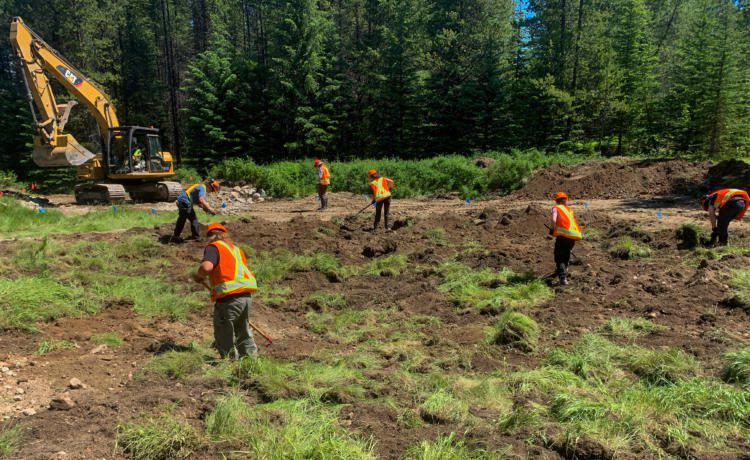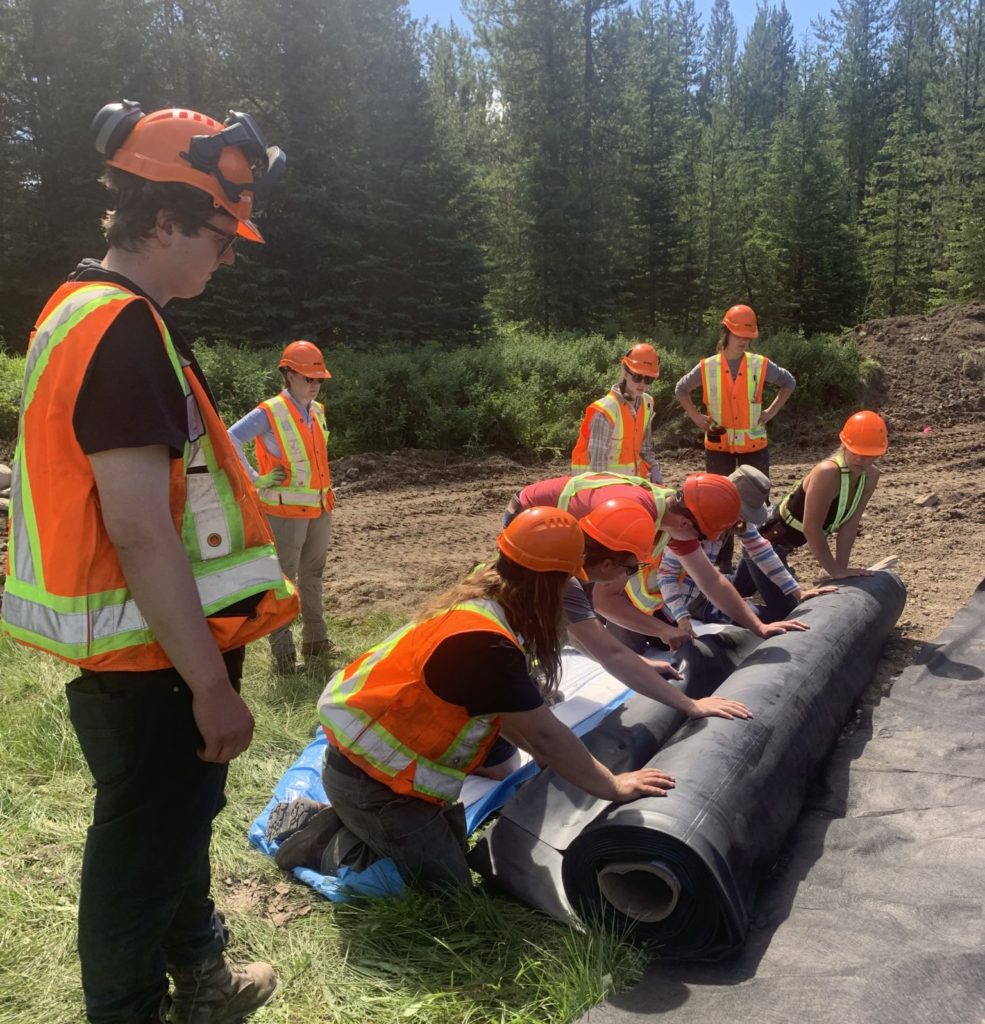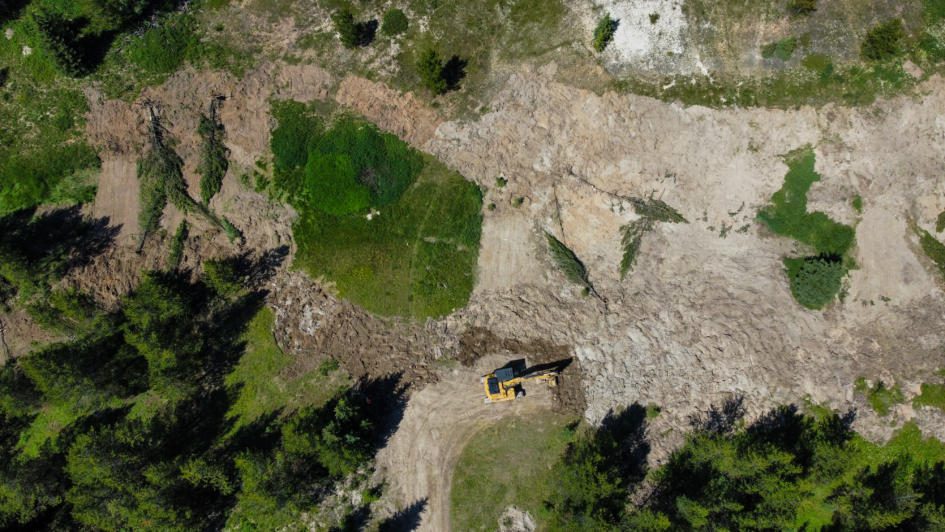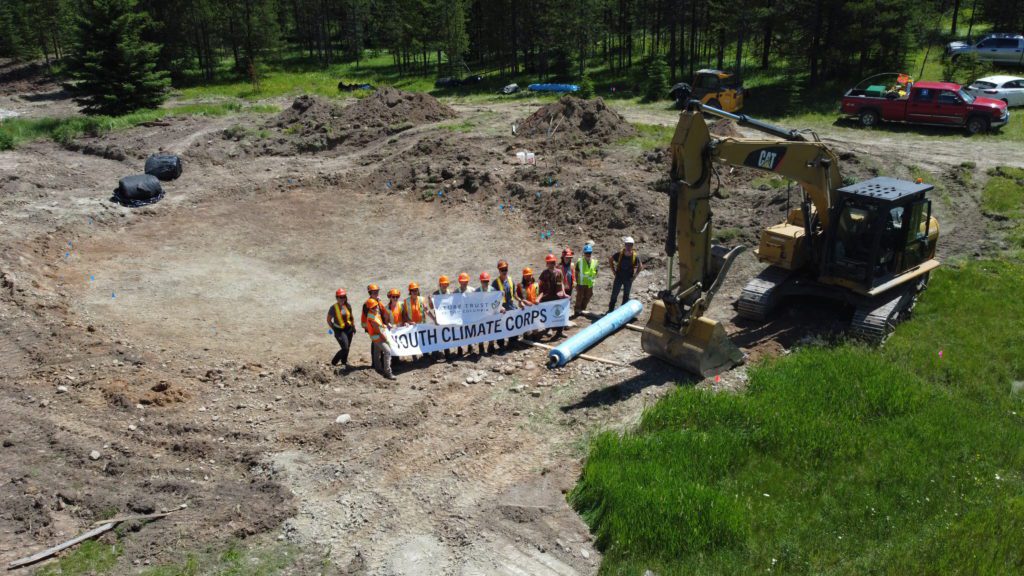
This article was originally published by Wildsight
A combination of science and sweat helped create a new wetland in the Elk Valley, bolstering efforts to protect and conserve this ecologically rich region. Wildsight’s Kimberley/Cranbrook Youth Climate Corps (YCC) was hired to help build wetland basins on The Nature Trust of BC’s (NTBC) Big Ranch Conservation Area, located just off Highway 43, between Elkford and Sparwood, and within Ktunaxa ?amak?is (territory). This wetland enhancement project is part of an expansive, multi-year restoration project known as the Big Ranch Ecosystem Enhance Project (BREEP).
The BREEP project, primarily funded by Columbia Basin Trust and led by the Sparwood and District Fish and Wildlife Association (SDFWA), includes restoration and enhancement activities on the important forest, grassland and wetland ecosystems found within the 483.9 hectare conservation area.
Purchased between 1990 and 2003 by NTBC, the conservation area is nestled in the valley bottom, with high rocky mountains hedging in its borders. Scattered broadleaf deciduous black cottonwood and evergreen spruce trees spread patchy shade across the gently sweeping grasslands and rolling hills. In the peak of summer, wildflowers dot the landscape with bright splashes of colour.
Management objectives for this conservation area have a focus around maintaining and enhancing habitat values for Rocky Mountain elk, and specifically the herds that utilize this area as critical winter range. Aside from the elk, many wildlife species use this land, most of which could benefit from more reliable water sources across the landscape.

The Elk River runs along the east of the property, and culverts also allow water to flow from nearby roadsides, but much of the land here doesn’t retain enough water to create the eco-rich habitat found in a thriving wetland. There were some slight basins noted on the land, likely dug by a past rancher, with failed dams and a fair amount of erosion on the site.
“There just aren’t a lot of wetlands on this landscape,” explains Michelle Daniel, The Nature Trust of BC field technician.
To help encourage water stability on the site, reduce flooding, and increase biodiversity, The BREEP project hired Tom Biebighauser, a renowned wetland restoration consultant specializing in restoring wetlands that benefit plants and animals and are built to last without ongoing maintenance, to design new wetland builds here. Miranda Cross, a wetland restoration specialist with Rewilding Water and Earth Inc., implemented the wetland designs this year.
“We’ve targeted (to build) more of a wet meadow leading between basins now, to allow water to slowly pass between the basins and beyond, instead of a channelized, quick-moving flow. This will allow for better treatment of the storm water and agricultural runoff,” says Michelle.

The Youth Climate Corps crew helped with the project, spending about a week on site this July. After an excavator dug out each basin, the YCC team helped with the finer detailing to make the basin wetland-ready. They pulled rocks and raked the surface smooth before lining the basin with a heavy-duty fabric (geotextile fabric) above, and below an aquatic-safe pond liner and a layer of soil. Another group came to sow seeds to help establish a vegetative layer to the basin. Woody debris was placed throughout the basins to add habitat as well.
“The liner installs are a good lesson that many hands make light work,” says Michelle, noting the pond liners are super heavy and need to be placed in a very particular way, with a lot of prep work involved to get the site ready for the material. “We really appreciated having the crew there.”
The YCC crew was also able to fill in some divots in the channels of water to help achieve the slow-flow, wet meadow effect, reusing sod pulled from the basin sites.
“It’s a bit different working with wetlands. It’s something we weren’t really familiar with,” says Ivy Desboilles, one of the six YCC crew members working on this project. “It’s great to be involved in this project, and know the impact it’s going to have.”
While on-site, the crew toured a similar project done on the property in 2015.

“It was interesting to see a wetland that was built a while ago, to see how the landscape there has changed compared to the holes we’re digging,” shares Ivy.
This project was a great partnership for the Youth Climate Corps to work alongside other groups who contributed to on-the-ground support of the project. These groups included The Nature Trust of BC’s Field Crew and staff, The Sparwood and District Fish and Wildlife Association, the BC Ministry of Land, Water and Resource Stewardship, and the Rocky Mountain Trench Natural Resource Society (RMTNRS).
The BREEP project was made possible through the financial support of the Columbia Basin Trust, Teck Resources, The Sparwood and District Fish and Wildlife Association, The Nature Trust of BC, The Habitat Conservation Trust Foundation, North Coal Limited and The Elkford Rod and Gun Club.

